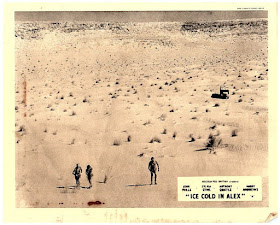Recently I’ve realized that the only reason I ever buy the English Sunday Times is for the Jeremy Clarkson column. Now, Clarkson is a serious hate figure for the British bien pensant liberal classes (which in many circumstances would include me), but I also think he’s one of the great ironists.
He never says exactly what he means and he never means exactly what he says, which is great, but it means the reader actually has to tease out his actual meaning, which of course is a terrible punishment for many readers.
Clarkson’s column last week was a masterpiece as he went to town on walkers and walking, under the headline ‘I leave the pointless promenading to the French. A walk is not a walk without a pub at the end.’
There are some pretty good lines as he lays into flaneurs – he doesn’t mention psychogeographers. I’m sure he knows what they are but maybe he doesn’t want to alienate his core readership with fancy words.
He says, ‘I couldn’t care less about almost everything, and I’ve always never wanted to spend two hours stroking the brass of a faded plaque in Spitalfields.
‘I’ve tried walking with no purpose. I’ve simply left my London flat and set off without knowing where I was going, and when I’d be back, and I always, always end up in the Ladbroke Arms. The other day I was in Mayfair and I decided to walk back to Holland Park which was about three miles away, and I ended up in the Ladbroke Arms, again, using rosé wine to water my remaining chins.’
Well this is marvelous, isn’t it? He obviously cares about a great many things (he’s a writer). He obviously knows the attractions of faded plaques in Spitalfields, and obviously if he’s prepared to walk three miles home, he’s more of a walker than most. Ending a walk in a pub is no kind of disqualification.
In fact Clarkson has some form in the abuse of walkers and walking, not least an article, again in the Sunday Times, from 2005 titled ‘Jackboots rule the countryside.’
He wrote, ‘Walking is something that I will gladly do when the car breaks down. In London I have been known to pop out for the papers and not stop until I get to Dartford in Kent. But the notion of treating the exercise as a noun, of going for "a walk": that has always seemed faintly preposterous.’
And then he goes for a walk, because it gives him a chance to abuse the then new Countryside Code, a thing that passed me by completely at the time. And in general it occurs to me that the kind of people who need a book telling them how to behave in the countryside are exactly the kind of people who aren’t going to read a book telling them how to behave in the countryside, but that’s just me.
He writes that the countryside ‘now looks like Camp X-Ray. You're marshalled by signposts telling you where the footpath goes and, just to make sure that you stay on it, you're fenced in by miles of electrified razor wire.
‘Every few hundred yards you are reminded of your responsibilities by slogans that would not look out of place in a Soviet tractor factory. "Kill nothing. Only time", said one.
‘There was another which said "No dogs". But before I turned to my faithful labrador and said, "For you ze valk is over."’ Yeah, his irony is sometimes way better than his jokes.
But then he concludes, ‘If you must go for a walk, forget the green bits that have been colonised and sanitised by Tony Blair's urban army; do it in the middle of your local city.
‘There is no mud, there are more visual diversions, you can go where you want without fear of electrocution, your dog is welcome and you won't come home covered from head to foot in shit.’
In other words, be a flâneur or a psychogeographer. Good old ironic Jeremy.
Incidentally, or coincidentally, last week’s Sunday Times ran a review of a book titledIn Praise of Walkingby Shane O’Mara, which according to the review is a book that says that walking is a good thing, which to some of us seems about as profound and suprising as saying that the pope defecates in the Vatican. O’Mara, apparently, collects together all the recent research which says that walking is, you know, a good thing, which no doubt is in itself a good thing. The reviewer called it ‘Convincing and compelling stuff.” Yes, honestly. They couldn’t have got Clarkson to write the review? Nah, he’d have been way too ironic.
Incidentally, there’s something about the jacket of In Praise of Walking that looks oddly familiar, can't quite think why.
.
















































